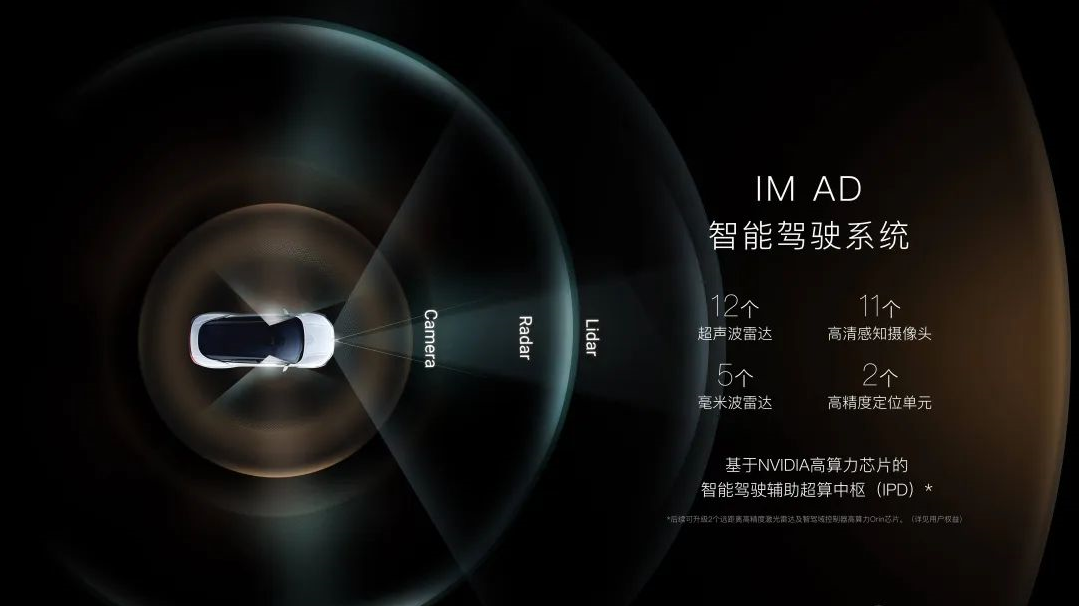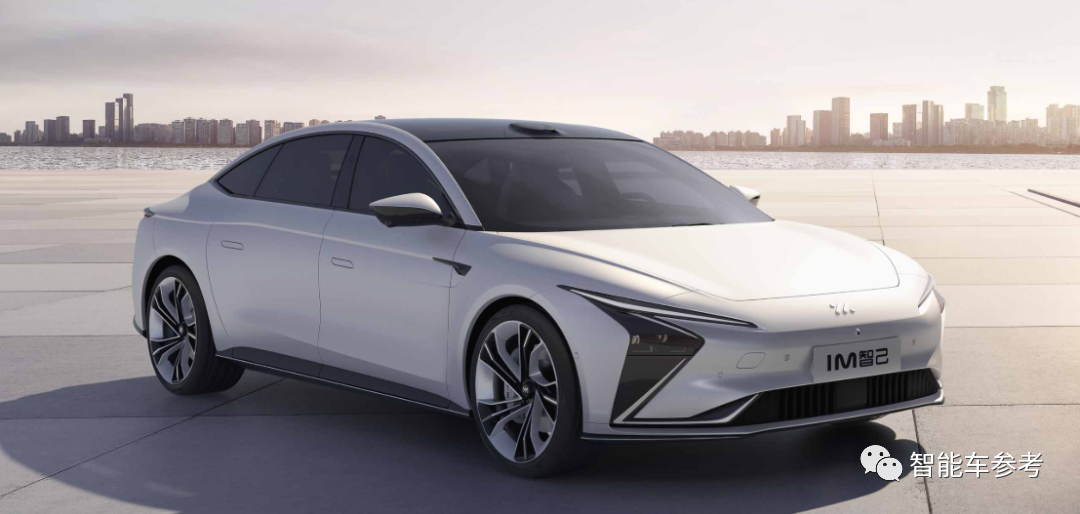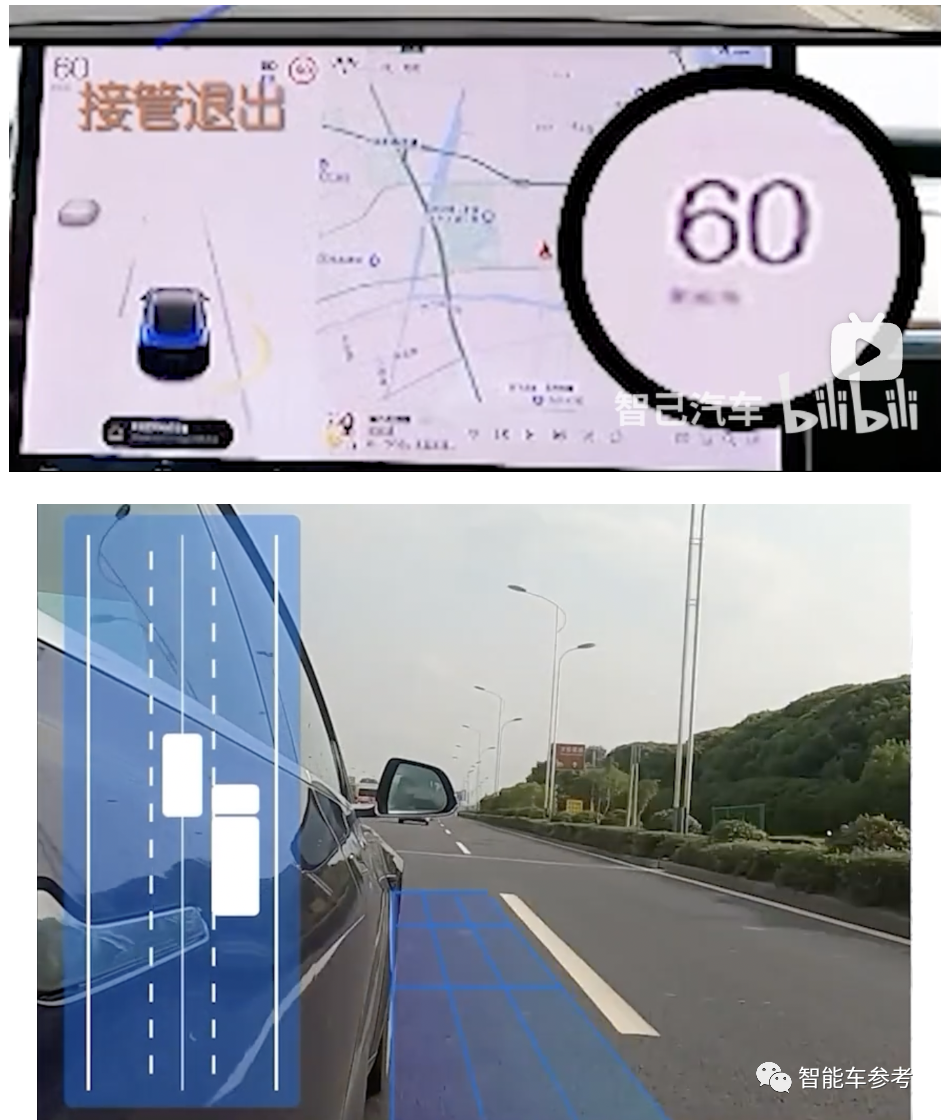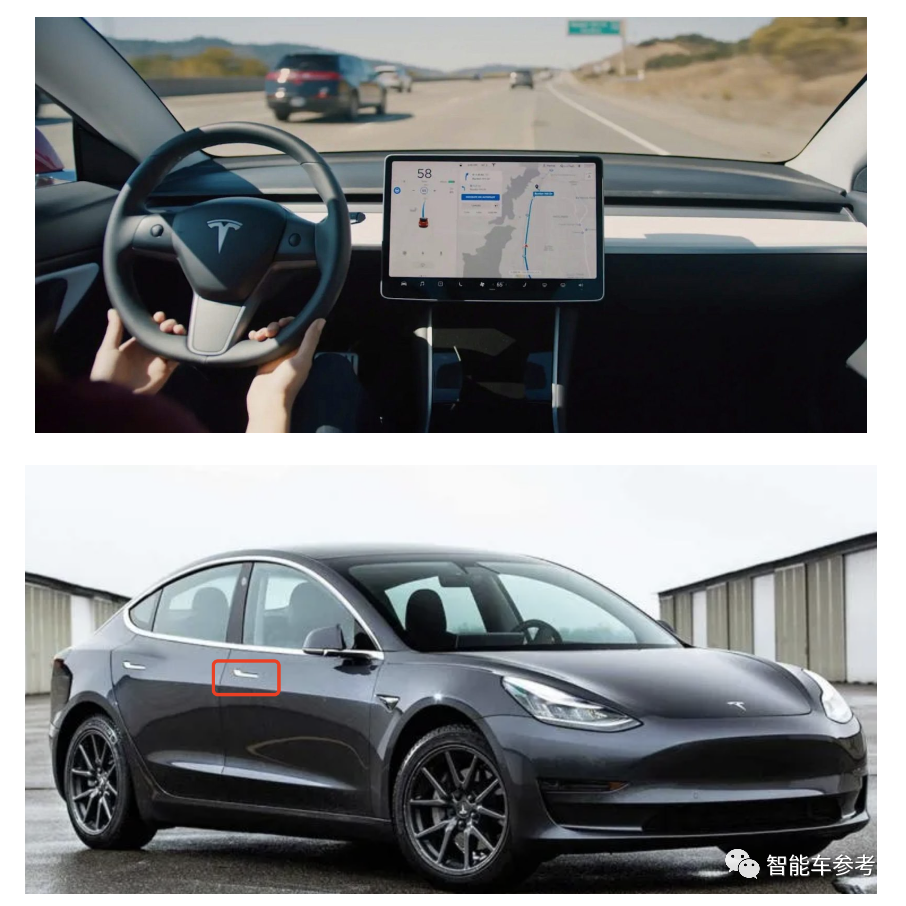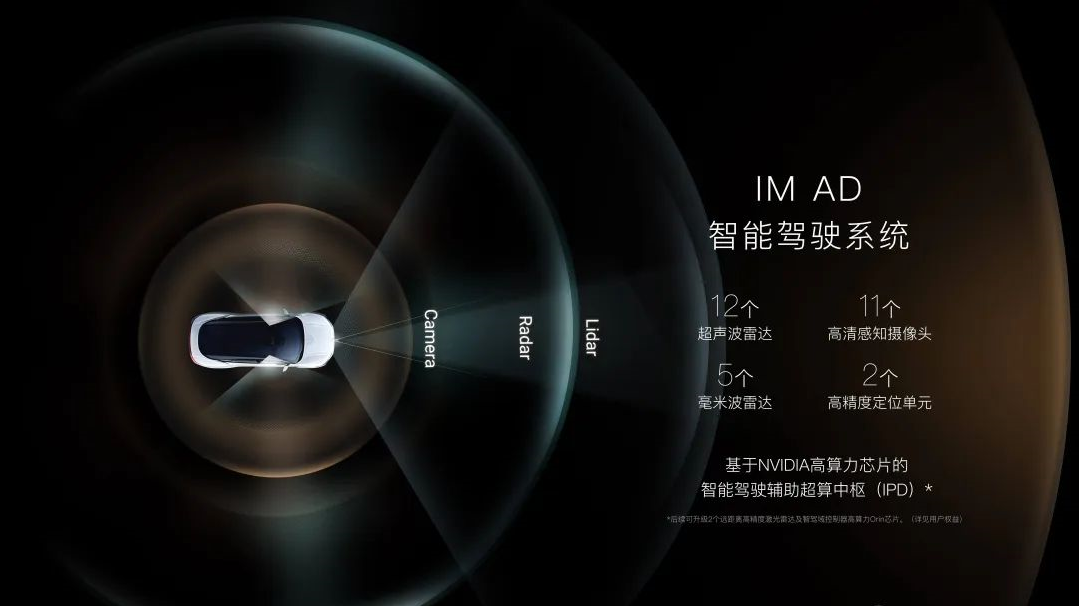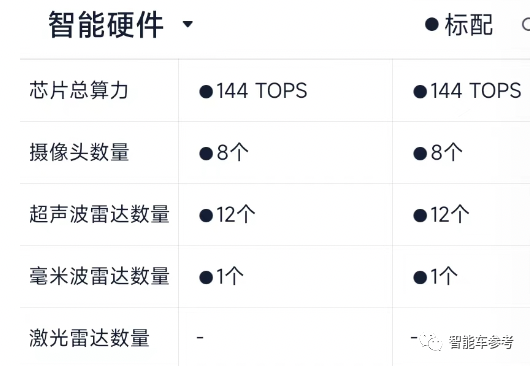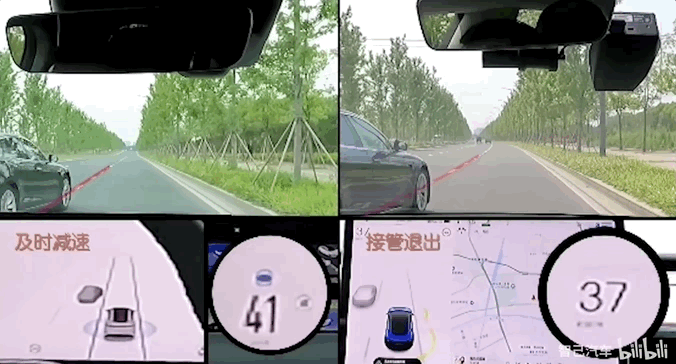Jia Haonan from the co-pilot temple,
Reference of Intelligent Vehicles | Official account of AI4Auto
In a four-minute comparison of intelligent driving in landscape mode, a “top player” in the industry was hammered ten times in quick succession.
“Top players failed to identify in time, leading to manual takeover”, “In the same scene, top players directly withdrew from the intelligent driving function”, “L7 recognized 800ms earlier than top players in the same scene, seizing the golden time to save lives”, “The strength has surpassed that of top players”…
This is from the press conference of IM Motors, the new intelligent pure electric brand of SAIC, where the first car L7 was officially launched and delivered last night at 7 pm.
Who is this “top player”? IM Motors didn’t say, but looking at the uncensored central control screen, UI interface, and door handles in the video:
Isn’t it obvious? It’s not anyone other than Tesla:
The debut model L7, IM Motors made a big deal about introducing intelligent driving as their top priority, and they were very confident.
But let’s get to the point: Where does the confidence of IM’s L7 in dissing competitors in intelligent driving come from? Is it worth the price tag of CNY 360,000-400,000?
Hammering the “Top Player” ten times with confidence, what kind of intelligent driving is it?
IM positions the intelligent driving solution IM AD loaded on the L7 as “more like human” intelligent driving.
Meaning that both have city L2 and highway assistance functions, L7 is smoother and silkier in avoidance, following and other strategies, and also more accommodating to passenger experience in some special scenarios.
Who is the “less like human”?
The comparison begins.
On IM’s L7 side, the configuration is as follows:
The “top player” configuration is as follows:
IM has a slight advantage in hardware.
The official selection of two common and difficult scenarios with high ADAS system exit rates in China: cutting in and abnormal vehicle shape.
The left side is IM L7, and the right side is the “top player”.
First is the merging in from a ramp on the side road. The so-called side road refers to a car that drives out of the ramp and crosses multiple lanes at once to merge into the current lane.“`
The evaluation from IM team:
“IM IM AD caught the best deceleration timing and some players directly exit at the same time.”
“IM AD recognizes the intention of cutting in two lanes in advance, and it’s more like a human driver than professional players that “faster is not as good as stable”.
The next scene shows a slow lateral intrusion of the leading vehicle at an extremely close distance:
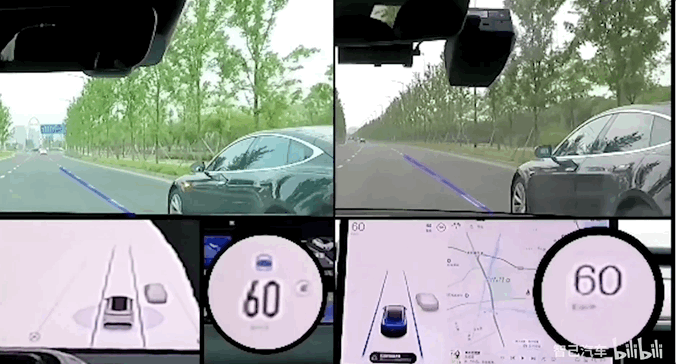
According to IM’s analysis:
“IM IM AD steadily slows down early and the leading player did not slow down early enough to cause a close distance and directly exit Zhidrive. The key here is whether the prediction is early enough, and we are nearly 800ms earlier than the leading player, with every millisecond being a golden time to save lives.”
The third scene is a parallel vehicle suddenly accelerating to overtake and intrude without pulling out a safe distance, and it is a “Special Car” type of cut-in.
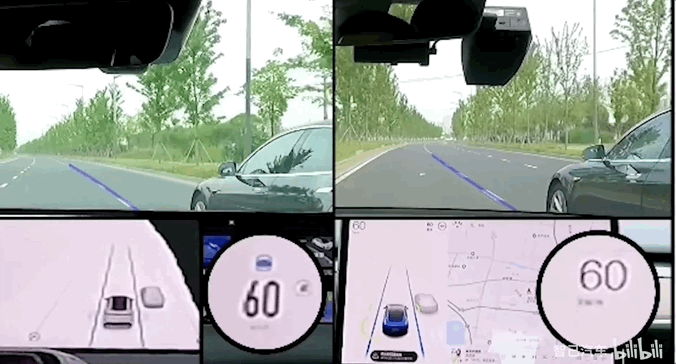
As mentioned, “IM IM AD predicts in advance and linearly decelerates, while the leading player directly exits Zhidrive.”
At the same time, it emphasized:
“Compared with the leading players, IM IM AD recognizes almost one wheel span in advance, with no discomfort of false braking or sudden shock of exiting ADAS at all.”
Aliens and large vehicles are very common in China, and the target size, color, and shape are varied. The endless target features and corner cases are challenges for any intelligent driving system.
The comparison between IM IM AD and the leading players is as follows:
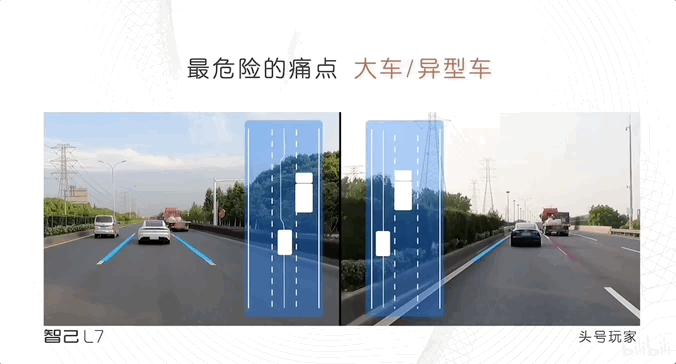
For large vehicles driving on the line, IM AD will actively avoid, and for other vehicles driving normally, IM AD will also actively give way 30 cm. In contrast, the leading players drive straight without slowing down.
IM explains the reason for this strategy to make passengers feel safer psychologically.

Based on the performance above, IM gives such an evaluation to its intelligent driving ability:
“In terms of functionality and performance, it has surpassed leading players in the industry!”
Where does the intelligent driving of IM L7 come from?
In the race towards intelligence and electrification, SAIC’s approach is core cooperation and bottom-layer self-reliance. It has rapidly obtained intelligent skills packages through investment and joint ventures.
And the first complete intelligent “paper” without reservation is IM L7.
The underlying software algorithm of IM AD on IM L7 comes from Momenta, an automatic driving company invested by SAIC and their main partner for Robotaxi and smart driving for passenger cars.

The core of IM AD is Momenta’s scheme, Mpilot, which includes 16 fundamental auxiliary driving functions, as well as high-level highway navigation assistance driving and autonomous parking capabilities.
IM AD, or Mpilot, has three critical factors: data-driven, massive data, and closed-loop automation.
Data-driven algorithms refer to the unified framework that Momenta has put a lot of effort into building and can automatically address a plethora of problems that exist within the data.
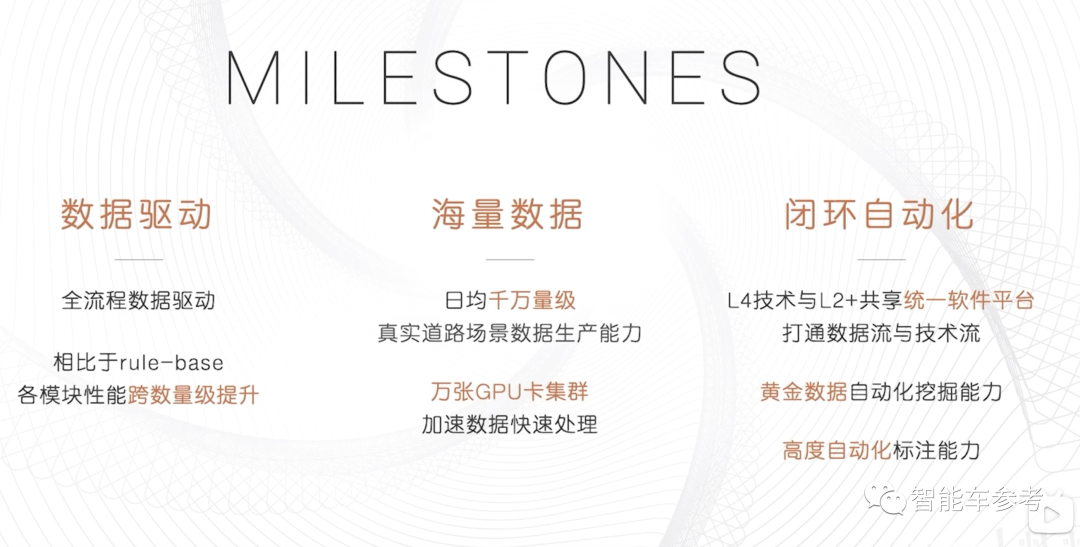
Under this technology framework, as production data streams in, the algorithm itself will become more “intelligent,” the system will continue to iterate, and the percentage of problems that can be automatically solved will also increase.
The massive data can come from IM L7 or SAIC’s commercial operation of RoboTaxi.
Because Momenta’s technical architecture employs a unified production sensor solution for mass-produced autonomous driving solutions, Mpilot and L4 solutions both use the same sensors.
This means that data collected by mass-produced sensors, such as visual, map, trajectory prediction, and takeover data, can be seamlessly applied and effectively assist MSD algorithms to improve. At the same time, MSD can also provide feedback on the latest technology to continuously enhance Mpilot’s abilities.

Looking at the reserved lidar interface on IM L7, it was originally aimed at advanced capabilities.
With 11 high-definition cameras, 5 millimeter-wave radars, 11 ultrasonic radars, and 2 positioning units, IM L7 has no shortage of bottom-level computing power, with 4 Nvidia Orin chips, and computing power of up to 1024T.With the help of LIDAR system, the intelligent driving ability served by this hardware configuration should at least achieve “triple integration”, which covers city roads, highways and parking lots.
When introducing the IM brand, it was promised that end-to-end intelligent driving ability would gradually be released through over-the-air (OTA) updates.
However, it should be noted that the first batch of IM L7 to be delivered will be equipped with a pure visual sensor solution and the previous generation Xavier chip from NVIDIA.
LIDAR and Orin chips are still on the futures market, but IM officials have said that the interface has been prepared for upgrade in the future.
However, the upgrading conditions and policies are still unclear at the moment, and the first batch of car owners have had disputes with IM officials due to this issue and are now trying to protect their rights.
These are the circumstances of SAIC IM’s intelligent driving system, which the company believes can beat the industry’s front runners.
Intelligent cars, SAIC defines its competition direction
In addition to the overconfident intelligent driving system, the official website of L7 has highlighted several other key features.
First and foremost, it is the intelligent scene, such as active suspension, intelligent adjustment of driving mode, etc.
The second is the social capability, including custom light language on the IM L7, the Carlog camera for video recording at any time, and 5G network connectivity.
The third is the ability to constantly upgrade and update software over the air, supported by Alibaba Cloud in the case of IM.
Finally, it is the unique digital mining business model, which encourages users to accumulate virtual currency through intelligent driving mileage and exchange them for various benefits, so as to encourage users to contribute more feedback data, accelerating the iteration of the back-end algorithm.
These four points may seem like regular features and configurations for users, but SAIC IM lists them separately for other reasons.
Intelligent scene, network interaction, OTA and user operation, combined with intelligent driving, these five are the hard standards for an intelligent car that SAIC has clearly defined.
This is also the main direction of competition between SAIC and other new forces, as well as traditional car companies that have undergone transformation.
After years of unsuccessful exploration of intelligent electrification and the embarrassment of being questioned by shareholders, as well as being questioned for refusing to cooperate with Huawei, SAIC has finally taken its first step in clearly recognizing and planning for intelligent cars through IM.
The core of the 5 standards is still the intelligent experience. So has the L7 made a breakthrough in intelligence to gain recognition from the public?
After the launch event, there were both positive and negative opinions.
People who praised the IM L7 did not focus on how powerful the features are, but rather on the humanized intelligent experience.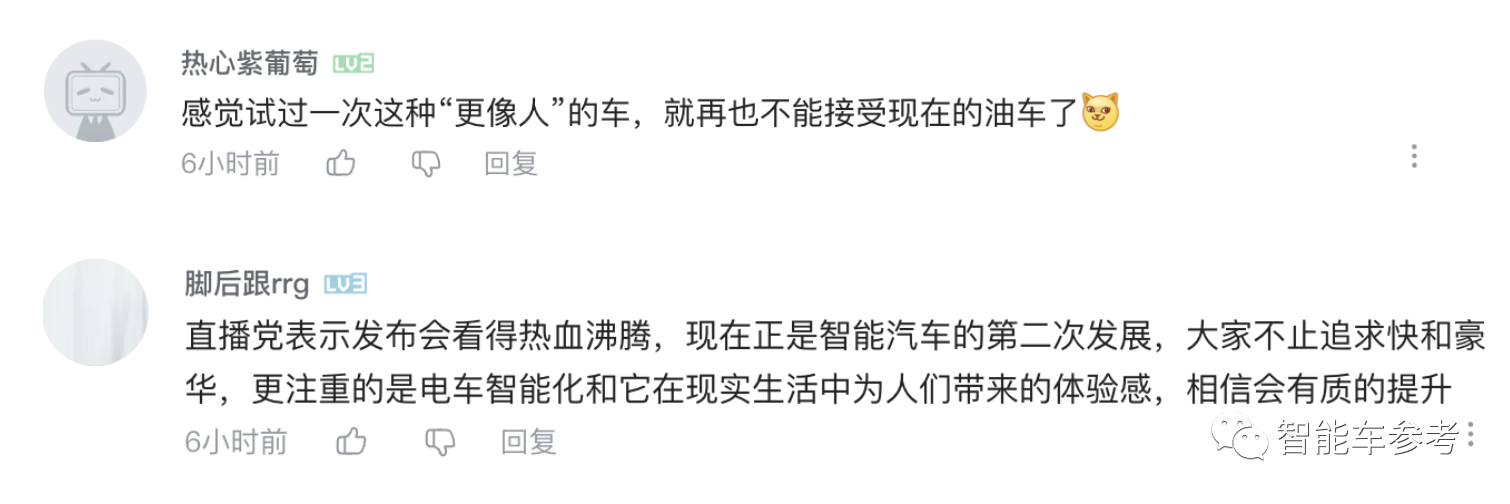
There are also doubts about the high cost of such intelligent configuration, some people think it is not worth it:

With such a level of intelligence, the starting price is 36w-40w. Do you think it is worth buying the IM L7, or is it just a case of “you recommend, I buy or not”?
— End —
This article is a translation by ChatGPT of a Chinese report from 42HOW. If you have any questions about it, please email bd@42how.com.
